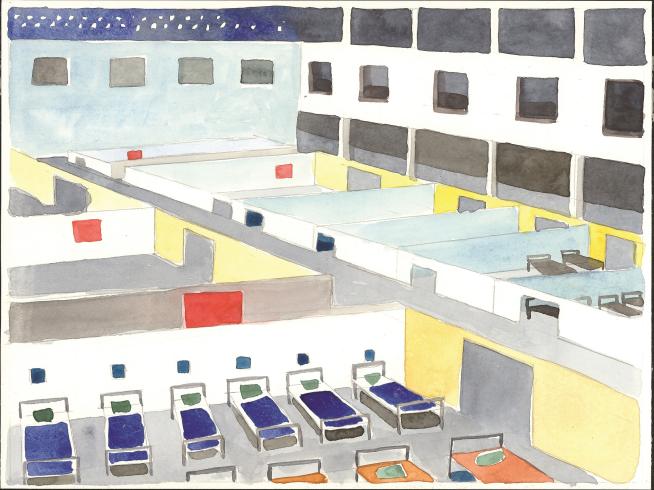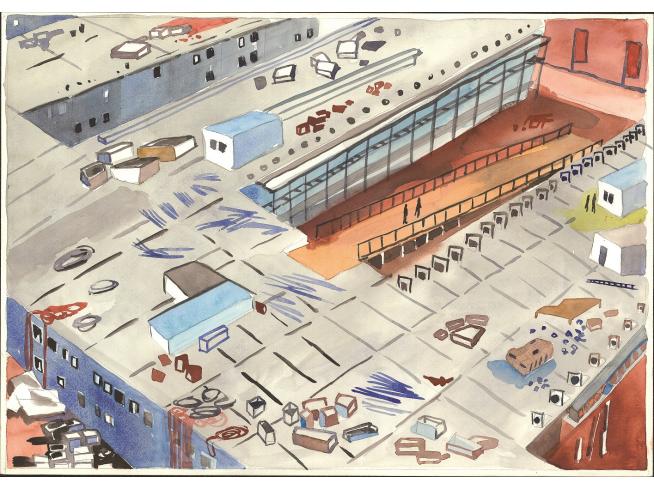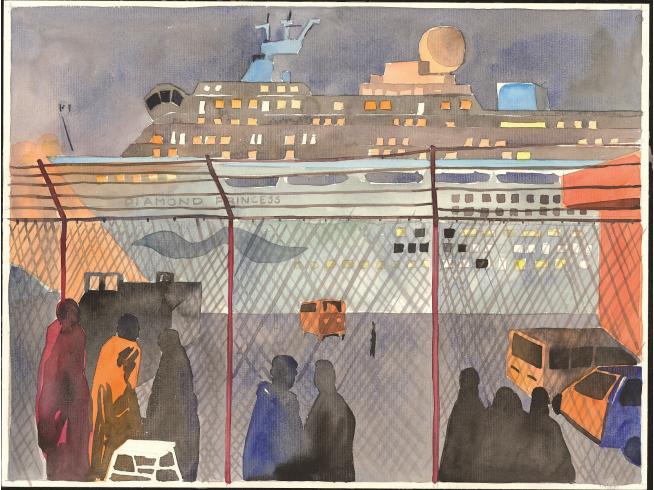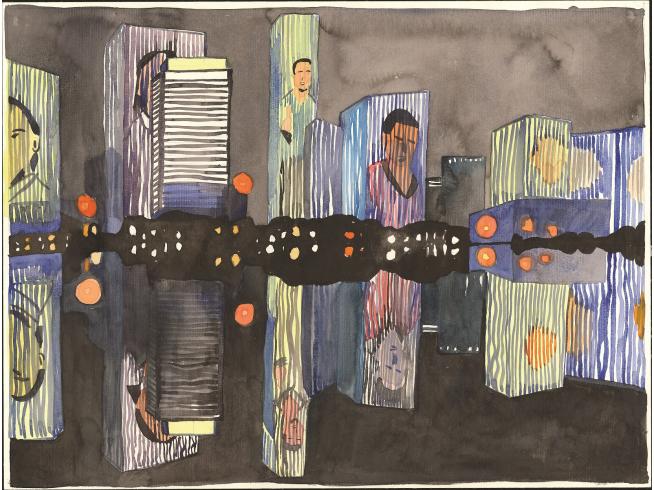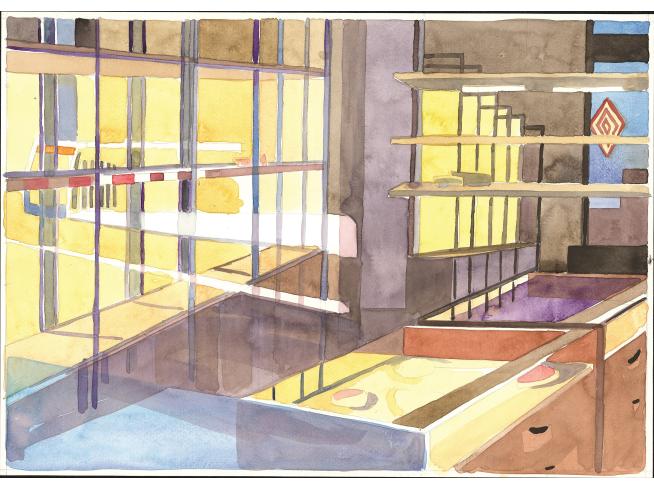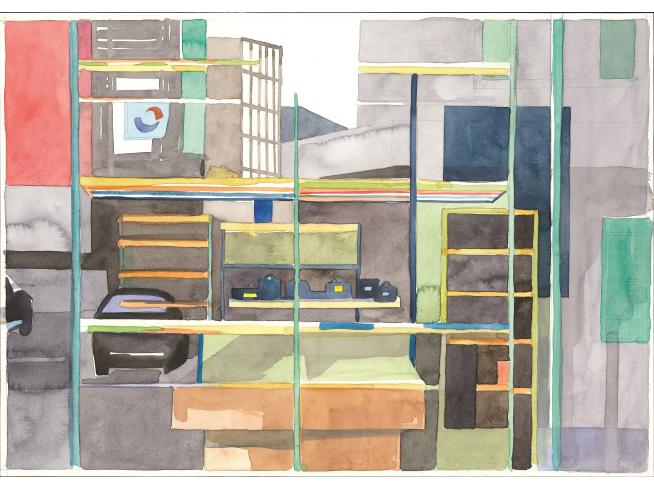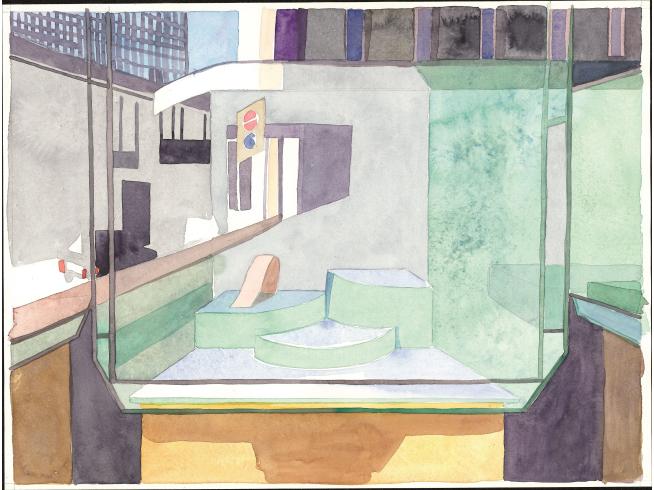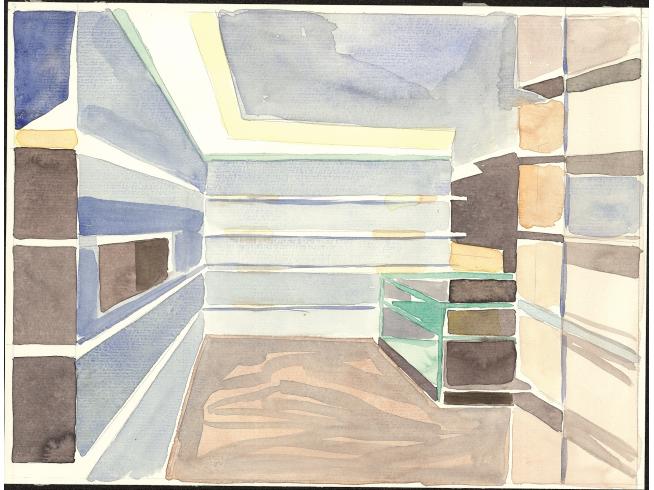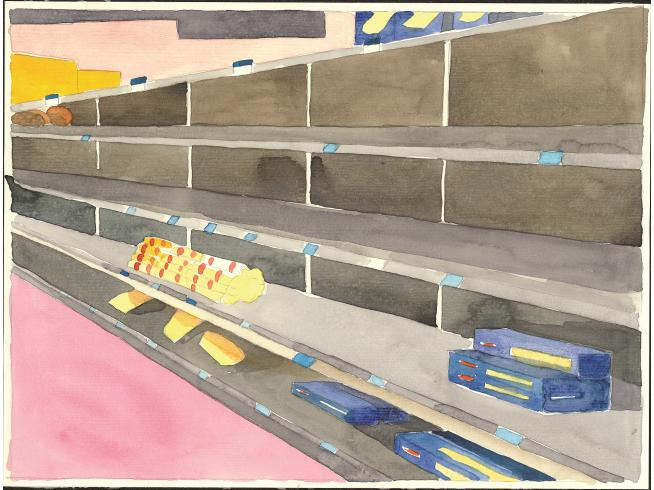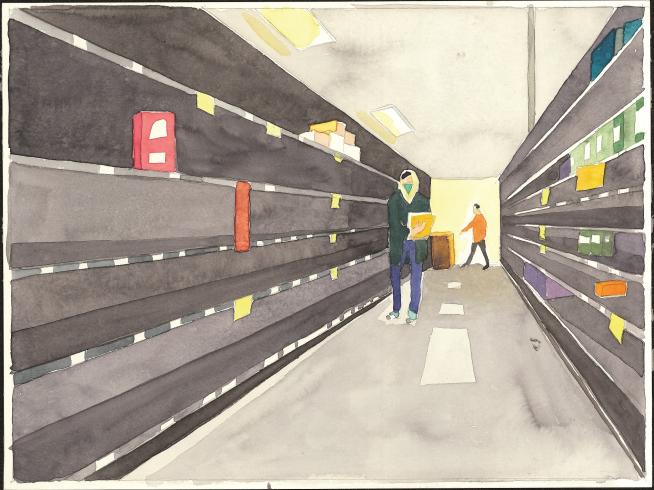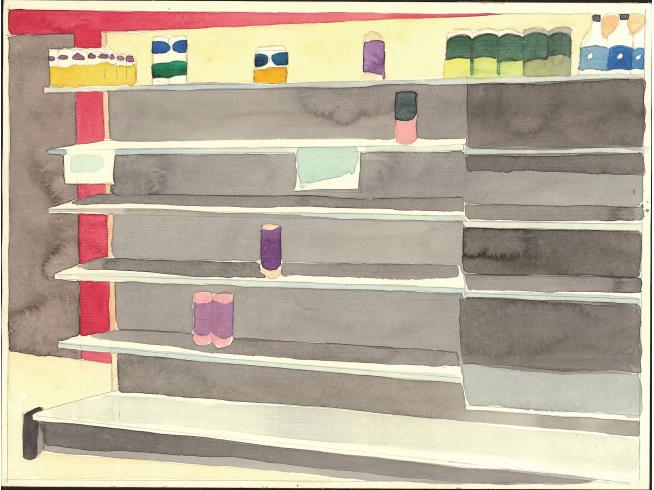Empty
Empty
Drawings of the shut down
Katharina Hohmann
Berween mid-march till end of may, 2020, in Geneva, where I live part of my time, all shops and facilities were shut down. The only stores that remained open were supermarkets and chemists. No shopping malls, no do-it-yourself or car centers, no boutiques, no bookstores. Flowers were not available anymore, and even small kiosks and grocery stores were forced to close. Supermarkets even in Switzerland nearly ran out of bottled water, even though you can easily drink the tap water. Geneva is actually reputed for having the purest water in the country. Toilet paper and paper towels were sold out. I was wondering why panic purchases started to be a worldwide phenomenon. In German this is called "Hamsterkäufe", or "hamster purchases" in English, which does not mean to buy hamsters, but rather, slipping into the role of buying and storing away like a hamster. Hamsters do appear to have an instinct for crisis and for organizing food supplies in advance. News outlets in all media covered this issue and in many ways I appreciated reducing my everyday life to the essential. And at least this question became important: what is essential? A friend posted on Instagram: "Why does the economy break down when people only buy what they need? "
Certain images astonished me, from the building sites of new hospitals in China and their vacancy immediately after having been finished, to the mountains of flowers that were dumped in the Netherlands because the so-called supply chain was interrupted due to the closing down of international transportation. On the other hand, forty thousand seasonal workers were allowed to travel into Germany from Eastern Europe in order to harvest asparagus and strawberries – usually more than a hundred thousand workers arrive each spring.
During this absolutely unique time of the "sanitary crisis" I was surprised that big ships could become the focus of a virus outbreak like the Diamond Princess, which was in lockdown for several weeks in the harbour of Yokohama, Japan. At the same time a big ship was utilized as a floating hospital like the Comfort, which was moored on the Hudson River in Manhattan. Concert halls, metro stations and airports, usually busy places, were totally deserted and presented a new image of public space. The Pope standing all alone at the centre of the empty Saint Peters’ Square in Rome, one of the most overrun public places in the world, during the Easter celebration without public presence.
I often walked through downtown Geneva, down the former busy streets like the Rue du Rhône, where you find shops and boutiques. I enjoyed the silent and deserted streets. I loved looking into the glass display cases and the empty shop windows where the colors of the new spring collections had almost totally disappeared. I loved looking through the reflecting windows into the void of the shops, where display furniture appeared as a kind of minimalistic geometry, stage settings as hypothetical as they were totally present: nobody knew if fashion would ever return and nobody knew how long the lockdown would last. The empty displays were displaying themselves.
……………….
The watercolors titled EMPTY were painted between March and May 2020. I was quite happy about this kind of "flow", as for me it is impossible to force the process. While painting I can attentively listen to lectures and conferences. I re-discovered some sociologists and philosophers which I listened to in original recordings and discussions. The watercolors are somehow also storages of this experience and I can even tell whom I was listening to while painting them, one by one. This was my way of getting through this very special springtime 2020.
Das Buch "Empty" mit den Abbildungen der Serien kann man hier bestellen.
FAITS DIVERS, Aquarell / Watercolor
- A Temporay Hospital, Wuhan (China), 24 x 32 cm
- Construction of a Temporary Hospital, Wuhan (China), 34 x 48 cm
- Diamond Princess, Yokohana (Japan), 42 x 56 cm
- Projection on Skyline of Medical Staff Working in Hospitals, Wuhan (China), 42 x 56 cm
BOUTIQUE, Aquarell / Watercolor
- Bottega Veneta, 36 x 48 cm
- Gucci, 36 x 48 cm
- Richard Mille, 36 x 48 cm
- Yves saint Laurent, 24 x 32 cm
SUPERMARKETS, Aquarell / Watercolor, je /each 24 x 32 cm
Certain images astonished me, from the building sites of new hospitals in China and their vacancy immediately after having been finished, to the mountains of flowers that were dumped in the Netherlands because the so-called supply chain was interrupted due to the closing down of international transportation. On the other hand, forty thousand seasonal workers were allowed to travel into Germany from Eastern Europe in order to harvest asparagus and strawberries – usually more than a hundred thousand workers arrive each spring.
During this absolutely unique time of the "sanitary crisis" I was surprised that big ships could become the focus of a virus outbreak like the Diamond Princess, which was in lockdown for several weeks in the harbour of Yokohama, Japan. At the same time a big ship was utilized as a floating hospital like the Comfort, which was moored on the Hudson River in Manhattan. Concert halls, metro stations and airports, usually busy places, were totally deserted and presented a new image of public space. The Pope standing all alone at the centre of the empty Saint Peters’ Square in Rome, one of the most overrun public places in the world, during the Easter celebration without public presence.
I often walked through downtown Geneva, down the former busy streets like the Rue du Rhône, where you find shops and boutiques. I enjoyed the silent and deserted streets. I loved looking into the glass display cases and the empty shop windows where the colors of the new spring collections had almost totally disappeared. I loved looking through the reflecting windows into the void of the shops, where display furniture appeared as a kind of minimalistic geometry, stage settings as hypothetical as they were totally present: nobody knew if fashion would ever return and nobody knew how long the lockdown would last. The empty displays were displaying themselves.
……………….
The watercolors titled EMPTY were painted between March and May 2020. I was quite happy about this kind of "flow", as for me it is impossible to force the process. While painting I can attentively listen to lectures and conferences. I re-discovered some sociologists and philosophers which I listened to in original recordings and discussions. The watercolors are somehow also storages of this experience and I can even tell whom I was listening to while painting them, one by one. This was my way of getting through this very special springtime 2020.
Das Buch "Empty" mit den Abbildungen der Serien kann man hier bestellen.
FAITS DIVERS, Aquarell / Watercolor
- A Temporay Hospital, Wuhan (China), 24 x 32 cm
- Construction of a Temporary Hospital, Wuhan (China), 34 x 48 cm
- Diamond Princess, Yokohana (Japan), 42 x 56 cm
- Projection on Skyline of Medical Staff Working in Hospitals, Wuhan (China), 42 x 56 cm
BOUTIQUE, Aquarell / Watercolor
- Bottega Veneta, 36 x 48 cm
- Gucci, 36 x 48 cm
- Richard Mille, 36 x 48 cm
- Yves saint Laurent, 24 x 32 cm
SUPERMARKETS, Aquarell / Watercolor, je /each 24 x 32 cm
